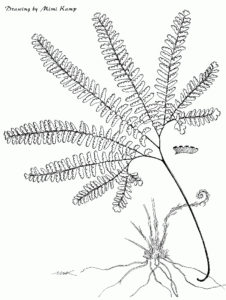HSV-1 and HSV-2 (herpes simplex virus type 1 and type 2) are the viruses that cause cold sores, canker sores, and genital herpes. Herpes viruses are spread by oral and genital contact and cause lifelong infections, with outbreaks of painful blisters.
Gigartina is a Red marine algae (seaweed) that contains large amounts of carrageenans (antiviral and herpes-suppressing polysaccharides).
Gigartina is primarily used to reduce the frequency and severity of HSV-1 and HSV-2 outbreaks. This use is supported by numerous clinical studies (see references below).
In our own experience and the experience of many of our customers, daily consumption of three to six grams of Gigartina has the following effects:
- a significant reduction in the number of outbreaks
- the outbreaks are milder and shorter in duration.

Additional Health Information
Research suggests that Gigartina is antiviral against many other viruses, including HPV, influenza and the common cold. Gigartina is traditionally known for its tonic effects on the lungs, digestive tract and immune system.
Shop Gigartina Powder and Red Marine Algae Capsules
References
Buck C. B., Thompson C. D., Roberts J. N., Müller M., Lowy D. R., Schiller J. T. Carrageenan is a potent inhibitor of papillomavirus infection. PLoS Pathogens. 2006;2(7, article e69) doi: 10.1371/journal.ppat.0020069.
Carlucci M. J., Pujol C. A., Ciancia M., et al. Antiherpetic and anticoagulant properties of carrageenans from the red seaweed Gigartina skottsbergii and their cyclized derivatives: correlation between structure and biological activity. International Journal of Biological Macromolecules. 1997;20(2):97–105. doi: 10.1016/s0141-8130(96)01145-2.
Carlucci M. J., Scolaro L. A., Noseda M. D., Cerezo A. S., Damonte E. B. Protective effect of a natural carrageenan on genital herpes simplex virus infection in mice. Antiviral Research. 2004;64(2):137–141. doi: 10.1016/j.antiviral.2004.07.001.
Ehresmann, D. W., E. F. Deig, M. T. Hatch, L. H. Di Salvo & N. A. Vedros. 1977. Antiviral substances from California marine algae. J. Phyco!. 13: 37-40.
Ehresmann, D. W., E. F. Deig & M. T. Hatch, 1979. Anti- viral properties of algal polysaccharides and related compounds. In H. A. Hoppe, T. Levring & Y. Tanaka (eds), Marine Algae in Pharmaceutical Science, W. de Gruyter, N.Y.: 293-302.
Gonzalez M. E., Alarcon B., Carrasco L. Polysaccharides as antiviral agents: antiviral activity of carrageenan. Antimicrobial Agents and Chemotherapy. 1987;31(9):1388–1393. doi: 10.1128/aac.31.9.1388.
Grassauer A., Weinmuellner R., Meier C., Pretsch A., Prieschl-Grassauer E., Unger H. Iota-Carrageenan is a potent inhibitor of rhinovirus infection. Virology Journal. 2008;5, article 107 doi: 10.1186/1743-422x-5-107.
Richards, J. T., E. R. Kern, L. Glasgow, J. Overall, E. Deig & M. Hatch, 1978. Antiviral activity of extracts from marine algae. Antimicrob. Agents Chernother. 14: 24-30.
Tang F., Chen F., Li F. Preparation and potential in vivo anti-influenza virus activity of low molecular-weight κ-carrageenans and their derivatives. Journal of Applied Polymer Science. 2013;127(3):2110–2115. doi: 10.1002/app.37502.
Whyte, J. N. c., R. E. Foreman & R. E. DeWreede, 1984. Phycocolloid screening of British Columbian red algae. Proc. int. Seaweed Symp. 11: 537-541.
Zacharopoulos V. R., Phillips D. M. Vaginal formulations of carrageenan protect mice from herpes simplex virus infection. Clinical and Diagnostic Laboratory Immunology. 1997;4(4):465–468.




